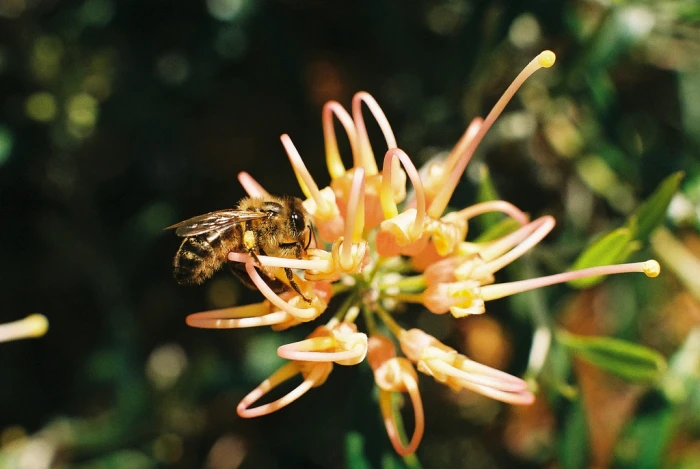Olive Grevillea
(Grevillea olivacea)
Olive Grevillea (Grevillea olivacea)
/
/

brettanomyces
CC BY-SA 2.0
Image By:
brettanomyces
Recorded By:
Copyright:
CC BY-SA 2.0
Copyright Notice:
Photo by: brettanomyces | License Type: CC BY-SA 2.0 | License URL: https://creativecommons.org/licenses/by-sa/2.0 | Uploader: File Upload Bot (Magnus Manske) | Publisher: Wikimedia Commons | Title: Grevillea_olivacea.jpg | Notes: {{GFDL-self}} [[Category:Grevillea]] |







Estimated Native Range
Climate Requirements for Cleveland Heights, Ohio
| This Plant | Your Site | Plant Suitability for Your Location | ||
|---|---|---|---|---|
| • Precipitation | 20" - 50" | 39" | Aquatic | Aquatic |
| • High Temp. | 79°F - 95°F | 83°F | Your summer temperatures are normal for this plant. | Excellent |
| • Low Temp. | 39°F - 51°F | 18°F | Your winter temperatures may be too cold for this plant | Too cold |
This plant may not grow well at your location - your precipitation is too high.
Summary
Grevillea olivacea, commonly known as Olive Grevillea, is an evergreen shrub endemic to the sandy coastal plains and limestone outcrops of the southwest of Western Australia. It typically grows up to 4 meters in height and can spread to 2-3 meters wide. The Olive Grevillea has a dense, rounded to spreading form with olive-green, needle-like leaves that give it a distinctive texture. It produces showy inflorescences of red, orange, or yellow flowers from June to October (early winter to mid-spring) in its native range, which attract nectar-feeding birds and insects.
Olive Grevillea is valued for its drought tolerance and vibrant flowers, making it a popular choice for water-wise gardens, native plant landscapes, and as a screening or hedge plant. It is also used in coastal reclamation projects due to its adaptability to poor soils and salt spray. In cultivation, it thrives in full sun to part shade and prefers well-drained soils, tolerating both medium and fast drainage. While it requires low amounts of water once established, regular pruning is beneficial to maintain its shape and promote denser growth. Olive Grevillea is generally pest-resistant but can be susceptible to root rot in poorly drained soils.CC BY-SA 4.0
Olive Grevillea is valued for its drought tolerance and vibrant flowers, making it a popular choice for water-wise gardens, native plant landscapes, and as a screening or hedge plant. It is also used in coastal reclamation projects due to its adaptability to poor soils and salt spray. In cultivation, it thrives in full sun to part shade and prefers well-drained soils, tolerating both medium and fast drainage. While it requires low amounts of water once established, regular pruning is beneficial to maintain its shape and promote denser growth. Olive Grevillea is generally pest-resistant but can be susceptible to root rot in poorly drained soils.CC BY-SA 4.0
Plant Description
- Plant Type: Shrub
- Height: 4-8 feet
- Width: 3-6 feet
- Growth Rate: Moderate
- Flower Color: Yellow, Orange, Red
- Flowering Season: Summer, Fall
- Leaf Retention: Evergreen
Growth Requirements
- Sun: Full Sun, Part Shade
- Water: Low
- Drainage: Medium, Fast
Common Uses
Bee Garden, Bird Garden, Butterfly Garden, Drought Tolerant, Hedges, Hummingbird Garden, Low Maintenance, Showy Flowers, Street Planting
Natural Habitat
Sandy coastal plains and limestone outcrops
Other Names
Common Names: Olive Leaf Grevillea
Scientific Names: Grevillea olivacea, Hakea olivacea
GBIF Accepted Name: Grevillea olivacea George